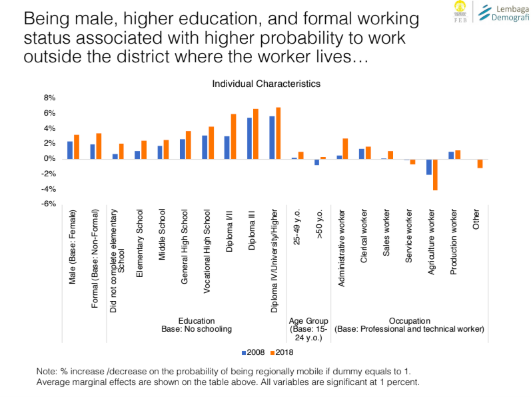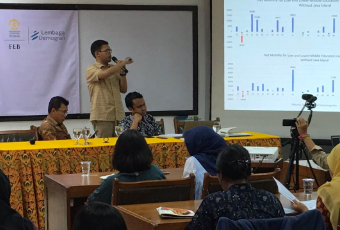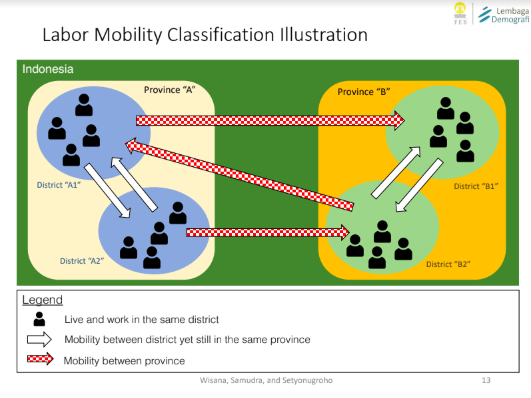Indonesia’s labor force has become increasingly mobile, both in terms of geography as well as industry. To discuss the implications of these movements on productivity and economic development, I Dewa Gede Karma Wisana, Rachmat Reksa Samudra, and Lourentius Dimas Setyonugroho of Lembaga Demografi FEB UI presented their study on the topic in an FKP seminar hosted by Lembaga Demografi FEB UI on Friday, 9 August 2019.
Previous studies show that an area with a higher income per capita and better standards of living may lure people into migrating to said area. In contrast, characteristics at the place of origin such as high unemployment, poverty, and low educational level may push individuals to find work elsewhere. Age, gender, exposure to training, and educational level also affect mobility decisions.
Using Indonesia’s National Labor Force Survey (SAKERNAS) from 2008 and 2018, this study identified workers’ mobility and analysed several socioeconomic indicators such as unemployment, Gini index, GRDP, and poverty rate, among others. Labor mobility is also divided into two categories: cross-district if workers live and work in different districts (but could be in the same province), and cross-province if workers live and work in different provinces.
In general, this study found that labor mobility in Indonesia has been increasing in the past 10 years. This trend is driven by cross-province mobility. Higher labor mobility is also more apparent for male workers, both for cross-province and cross-district mobility, although the trend of female mobile workers is also increasing. Higher mobility is also shown among workers aged 25-49, educated, working in the formal and service sectors, and low-skilled. The dynamics of net mobility is also still concentrated in Java. Therefore, omitting Java from the analysis shows more variations in the mobility patterns among other areas. In Java, the services sector such as trade and hotel industry significantly influence the dynamics of mobility, whereas outside Java provinces with higher natural resources and tourism are more influential. In all areas, provinces with a higher share of GDRP in agriculture is linked to negative net mobility, while the negative relationship between GDRP share in manufacturing and net mobility is diminishing over time.
 This study also found that individual characteristics (such as gender, age, and education level) play a bigger role than regional characteristics of the origin and destination area. The reason behind this is the convergence and increasing connectivity between districts and provinces within the past decade, thus making the push and pull factors less relevant.
This study also found that individual characteristics (such as gender, age, and education level) play a bigger role than regional characteristics of the origin and destination area. The reason behind this is the convergence and increasing connectivity between districts and provinces within the past decade, thus making the push and pull factors less relevant.
For the complete presentation and Q&A session, please refer to the video and materials provided.






